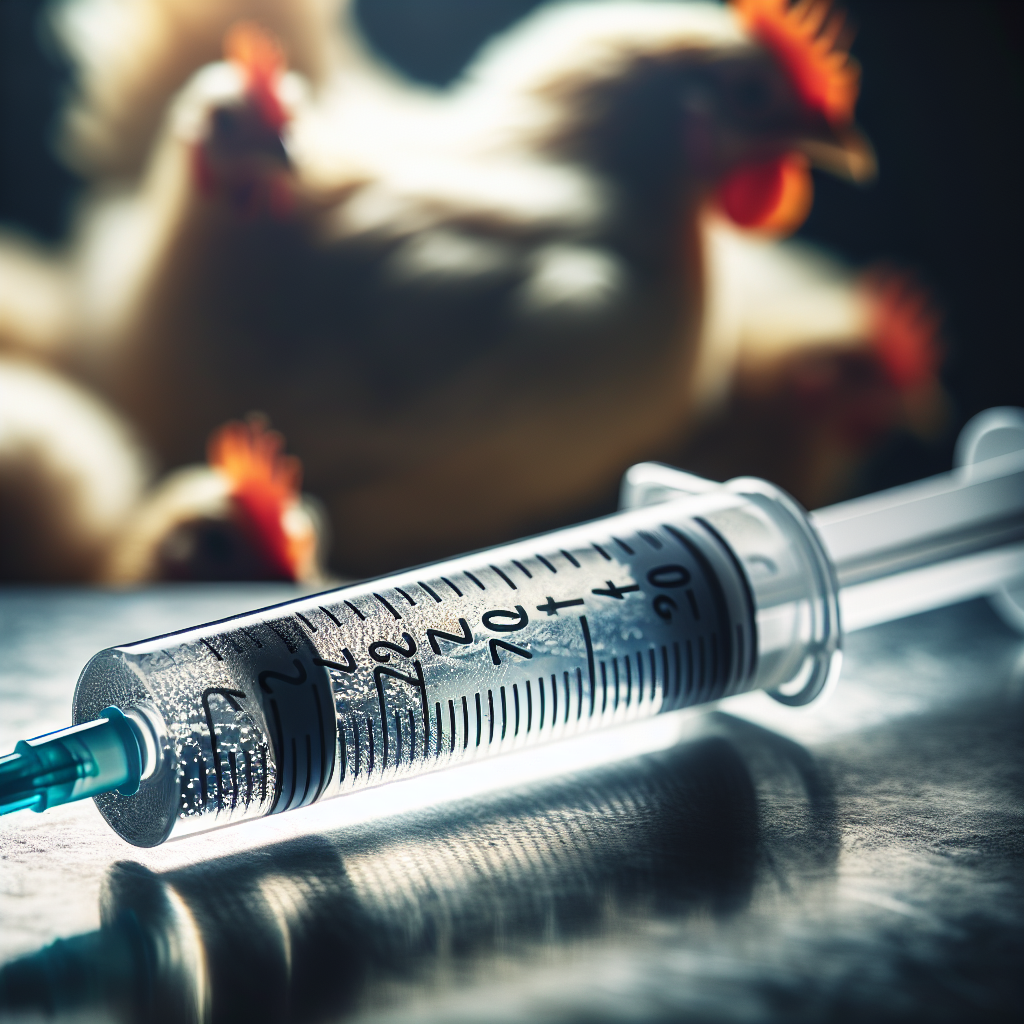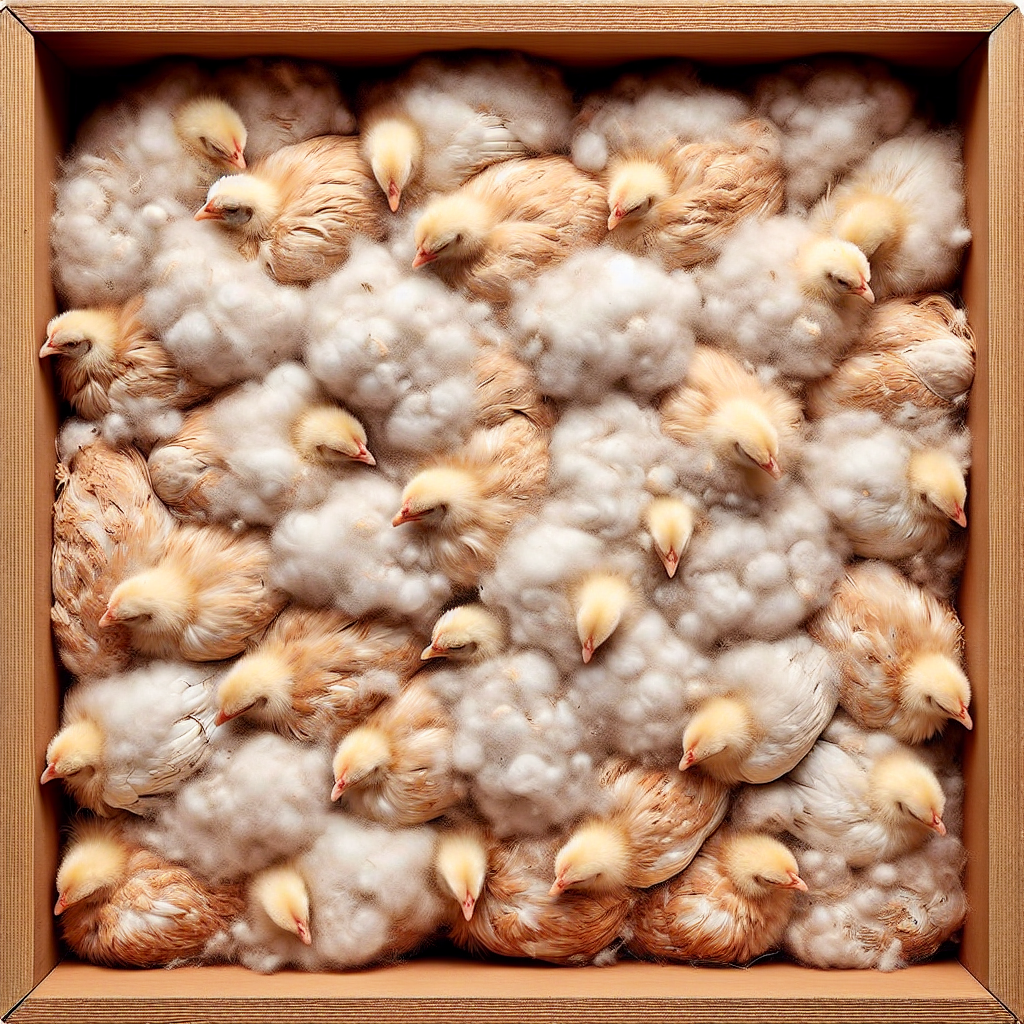Are you a chicken owner who wants to ensure the health and well-being of your flock? If so, it’s important to know how to quickly identify the symptoms of avian influenza in chickens. With this knowledge, you can take immediate action to prevent the spread of the disease and protect your feathered friends. In this article, we will explore the key signs to look out for, enabling you to recognize avian influenza early on and ensure the best care for your chickens. So let’s dive in and learn how to keep your flock healthy and happy! Avian influenza, also known as bird flu, is a highly contagious viral disease that affects various species of birds, including chickens. It is important to quickly identify the symptoms of avian influenza in order to take appropriate measures to prevent its spread and minimize its impact on poultry populations. In this article, we will explore the causes of avian influenza, common symptoms to look out for, the differences between highly pathogenic and low pathogenic avian influenza, steps for quick identification of symptoms, and prevention and control measures.
Causes of Avian Influenza
Avian influenza is caused by various strains of the influenza A virus. The virus can be transmitted through direct contact with infected individuals, such as other birds or contaminated surfaces. It can also spread through contaminated feed or water, or through environmental contamination. Wild birds, particularly waterfowl, are natural hosts for avian influenza viruses, and they can transmit the virus to domestic poultry.
Common Symptoms of Avian Influenza
Avian influenza can manifest in various ways, depending on the strain and the affected bird species. However, there are some common symptoms to look out for.
Respiratory Symptoms
Respiratory symptoms are often prominent in birds infected with avian influenza. These may include coughing, sneezing, nasal discharge, rapid breathing, and difficulty breathing. Birds may exhibit labored breathing, gasping for air, or wheezing sounds. These symptoms can be easily observed in the flock during routine checks.
Digestive Symptoms
Digestive symptoms may also occur in birds with avian influenza. Diarrhea is a common symptom, along with a loss of appetite. In laying hens, there may be a sudden drop in egg production as a result of the infection.
Nervous System Symptoms
Avian influenza can affect the nervous system of infected birds, leading to symptoms such as paralysis, tremors, and twisting of the head or neck. Birds may also display incoordination, loss of balance, or unusual movements.
General Signs of Illness
In addition to specific symptoms related to respiratory, digestive, and nervous systems, birds with avian influenza may exhibit general signs of illness. These include depression, lethargy, ruffled feathers, weight loss, and dehydration.
Respiratory Symptoms of Avian Influenza
Respiratory symptoms are one of the key indicators of avian influenza in chickens. Chickens with avian influenza may develop a persistent cough, with occasional sneezing and nasal discharge. Rapid breathing and difficulty breathing may also be observed. These symptoms can be observed in affected birds, and it is important to monitor the flock closely for any respiratory distress.
Digestive Symptoms of Avian Influenza
Digestive symptoms are another set of symptoms that can signify avian influenza in chickens. Birds may experience diarrhea, which can range from mild to severe. Another common symptom is a loss of appetite. This can be observed through reduced feed consumption or a sudden decrease in the amount of food consumed by the flock. In laying hens, avian influenza can also lead to a significant drop in egg production.
Nervous System Symptoms of Avian Influenza
Avian influenza can affect the nervous system of infected chickens, resulting in various neurological symptoms. Chickens may experience paralysis, where they are unable to move or use their limbs. Tremors, characterized by rhythmic or involuntary shaking movements, may also be observed. Another notable symptom is the twisting of the head or neck, giving the bird an abnormal posture. Chickens may also display signs of incoordination, such as stumbling or falling over while walking.
General Signs of Illness in Chickens
In addition to the specific symptoms related to respiratory, digestive, and nervous systems, there are general signs of illness that can be observed in chickens infected with avian influenza. These signs include depression, where the bird appears lethargic and uninterested in its surroundings. Ruffled feathers may also be observed, as the bird may not have the energy to preen and maintain its feathers properly. Weight loss and dehydration can also occur as a result of the infection.
Differences Between Highly Pathogenic and Low Pathogenic Avian Influenza
Avian influenza can be classified into two categories: highly pathogenic avian influenza (HPAI) and low pathogenic avian influenza (LPAI). These classifications are based on the severity of symptoms, mortality rate, ability to spread rapidly, and impact on the poultry industry.
Severity of symptoms
HPAI strains of avian influenza tend to cause more severe symptoms in infected birds compared to LPAI strains. Birds infected with HPAI may exhibit more pronounced respiratory distress, neurological symptoms, and overall illness compared to those infected with LPAI.
Mortality rate
HPAI strains of avian influenza generally have a higher mortality rate compared to LPAI strains. Infected birds may succumb to the infection in a relatively short period of time, leading to significant losses in poultry populations.
Ability to spread rapidly
HPAI strains of avian influenza have a higher potential to spread rapidly within a flock or between flocks. This can result in widespread outbreaks and difficulties in controlling the disease. LPAI strains, although still capable of spreading, tend to have a slower rate of transmission.
Impact on poultry industry
Due to the severity of symptoms, higher mortality rate, and faster spread, HPAI strains of avian influenza can have a more significant impact on the poultry industry. Outbreaks of HPAI can lead to trade restrictions, culling of infected birds, and economic losses for the poultry sector.
Steps for Quick Identification of Avian Influenza Symptoms
Early identification of avian influenza symptoms is crucial for prompt intervention and prevention of further spread. Here are some steps you can take to quickly identify symptoms of avian influenza in chickens:
Regular health monitoring
Establish a routine for regularly monitoring the health of your flock. This can involve daily or weekly checks on the birds’ behavior, appearance, and overall well-being.
Observation of behavior and appearance
Pay close attention to any abnormalities in the behavior or appearance of your chickens. Look out for signs of respiratory distress, such as coughing, sneezing, and rapid breathing. Note any changes in their appetite, egg production, or coordination.
Proper record keeping
Maintain detailed records of any observations or abnormalities you notice in your flock. This will help you track any patterns or changes over time and provide valuable information to veterinary professionals if needed.
Prompt veterinary consultation
If you observe any concerning symptoms or suspect avian influenza, contact a veterinarian experienced in poultry health as soon as possible. They will be able to conduct a thorough examination, perform diagnostic tests if necessary, and provide appropriate guidance and treatment options.
Prevention and Control Measures for Avian Influenza
Prevention and control of avian influenza are essential for minimizing the impact of the disease. Implementing the following measures can help reduce the risk of avian influenza outbreaks in your poultry flock:
Strict biosecurity protocols
Maintain strict biosecurity protocols to prevent the entry and spread of the avian influenza virus. This includes measures such as limiting access to the farm, proper disinfection of equipment and footwear, and preventing contact between wild birds and domestic poultry.
Vaccination
Consider vaccinating your flock against avian influenza. Consult with a veterinarian to determine the most appropriate vaccination strategy based on the prevalent avian influenza strains in your region.
Quarantine and isolation
Implement quarantine measures for new birds entering your flock, and isolate any sick or potentially infected birds from the rest of the flock. This will help prevent the spread of avian influenza if an outbreak occurs.
Safe disposal of carcasses
Properly dispose of carcasses from infected or dead birds to minimize the risk of transmission. Follow recommended guidelines for safe disposal, which may include burial, incineration, or other approved methods.
Regular cleaning and disinfection
Maintain a strict cleaning and disinfection regimen for the poultry housing and equipment. Clean and disinfect regularly to minimize the presence of the avian influenza virus in the environment.
Preventing contact with wild birds
Take measures to prevent contact between your poultry flock and wild birds, particularly waterfowl. This can include physical barriers, netting, or modifications to the housing and outdoor areas to minimize the risk of exposure.
Conclusion
Avian influenza is a serious disease that can have significant consequences for poultry populations and the poultry industry as a whole. Quick identification of symptoms is essential for implementing appropriate prevention and control measures to contain the disease and protect your flock. By being vigilant, regularly monitoring your birds, and promptly seeking veterinary advice, you can help safeguard your poultry flock from avian influenza and minimize its impact. Implementing biosecurity measures, vaccination, quarantine, and proper cleaning and disinfection protocols will further reduce the risk of avian influenza outbreaks, contributing to the overall health and well-being of your poultry flock.




